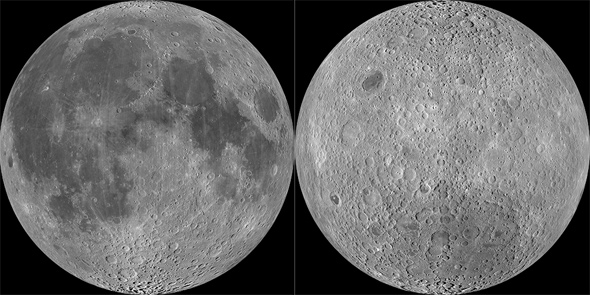Our Moon is weird. It’s pretty big compared with Earth, for one. It has a way lower density than Earth, but seems to have some similarities in chemical composition to our planet. It’s also two-faced: The near side looks a lot different than the far side, as you can see from the Lunar Reconnaissance Orbiter image above. The near side is splattered with dark regions (called maria, the plural of mare, Latin for “sea”). The far side barely has any.
Further study shows an odd anomaly: The crust on the far side is a lot thicker than it is on the near side. That explains the lack of maria; the thicker crust means it was harder for giant impacts to pierce the crust and get darker basaltic lava bubbling up. But why is the far side crust thicker? And why is this so neatly divided by the two hemispheres?
To read the full article, particularly the newer second hypothesis, click here.

